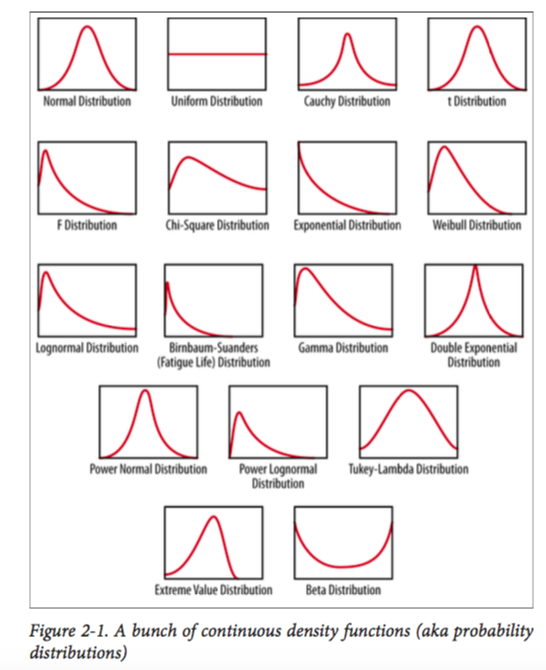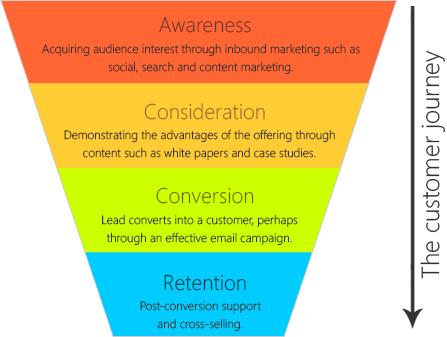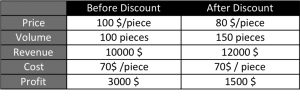There are endless debates on choosing the right tool for web analytics. Some argue that a free Google Analytics account is more than capable of taking care of the daily jobs, while others are worried about its accuracy and the privacy issues.
I definitely don’t want to add more fuels to these debates. Both sides have their reasons, but tools should be chosen based on your own business purpose and situation: What do you want to measure? What data quality do you need? How much do you want to pay for it? What compromise can you make? Nobody can tell you what is best for your business. You have to do the research.
But I want to share my experience of searching for analytics tools, which was a pure torture to my mind. The first time I type “web analytical tool” into Google, I got a list of results: “30 best web analytics tools”, “top 50 tools to monitor your online business”, “10 analytics tools that you must have”. After enthusiastically going through some top lists, I only got more and more confused. Although each tool has some cool and “unique” features, I still didn’t know which one to choose, but I was pretty sure that I didn’t want 10 tools on my website.
After the initial hype, I understood this blind surfing was leading me nowhere. I needed some decision criteria that can eliminate the candidates. Here I share some of them:
Javascript tag based or Web log based?
It’s another sensitive topic, to which people have many different opinions. I will just make a short summary here, you can find lots of details with Google.
Web log method get data directly from your web server’s log file. The log file contains a huge quantity of data of not only users visits and clicks, but also technical data which you don’t need. To make this raw data meaningful, you need a web engineer to clean up and pre-process the data for you. It’s effort taking, but the advantage is it can capture some information that javascript method can’t, such as search engine spider behaviour. You can find a few commercial and open-source systems for web log analysis, but you definitely need help from professional developers.
Javascript method get data from a short javascript snippet that you’ve inserted on each page of your website. It captures page views as well as actions such as clicking, downloading and scrolling. Installing the tracking code is very easy, which takes no more than 30 minutes . Most tools in the market use this method. It has some shortcomings, such as no spider or bot data is captured and it can’t capture data when javascript or cookie is not supported.
For short, Javascript based method is suitable for most of the cases, unless you have very specific need. Unfortunately this criterion didn’t help me eliminate many options out there since most tools are using javascript. I was ressured that there was no huge difference in the tracking technologies between different tools though.
Aggregated data or Individual data?
Aggregated / individual data type is one of the most important criteria, because it separates analytics tools into two large categories, and one cannot fulfil the purpose of another.
Aggregated data measures overall health and trend of your web visitors. It answers questions such as the traffic of the website, the popularity of the content, conversion rate and funnels, campaign efficiency, comparison of A/B test, etc.
Individual data tracks the behaviour of each individual user. There is usually individual page for each visitor. On the page you can find demographical information collected from web forms and all his interactions with your website presented in a chronological manner. Some tools provide filtering function that help you to retrieve visitors who fit certain conditions. Some tools even let you send emails and push messages to visitors.
To summarise, with aggregated data you know 30% of visitors watched your marketing video yesterday, and half of them were converted. You concluded it was a satisfactory campaign. With individual data, you know Jake watched the video but was not converted. You decided to send him a follow up email.
As I said, one tool rarely does well the two jobs. Google Analytics, for example, does great job collecting aggregated data, but it’s strictly forbidden to send personally identifiable information there. There are hacks that you can do to bypass this problem and identify users, but its capacity will be much more limited than any dedicated tool such as Kissmetrics. On the other hand, individual tracking tools provide some basic functions to aggregate the data and draw charts too. But the ways to analyse the data are much more limited.
Pageview or Event?
Pageview tracking tracks the loading of a webpage. The information you can get include the action of page visit, the previous page, the time that you spend on a page, cookie information.
Event tracking tracks user’s on-page actions such as clicking on a button, adding a item to shopping cart, filling a web form, interacting with embedded multimedia and downloading documents.
Traditional tools track pageviews, but event tracking is gaining its popularity. First people wanted to track outbound links and documents downloads. Then web applications became popular. Some applications use technologies such as Ajax, with which users can do everything without reloading the page. Some people even started to doubt about the necessity to track each pageview.
Although most tools support some level of event tracking now, the setup convenience and trackable event types are very different. The same thing as tracking individuals, tracking event with Google Analytics is possible, but it can be tricky and troublesome if you have high demand for event tracking. Choosing a dedicated alternative is more suitable.
Developer oriented or Marketer oriented?
If you are a marketer and your development team is always busy, then this is an important criterion to consider. After all, the best tool is still a tool, without being correctly implemented, it can do nothing.
Developer oriented tools need lots of effort from web developers. Mix panel is a great tool for event tracking, but you need to decide in advance everything that you want to track and implement them one by one together with your developer. It’s a piece of cake if you work in a small company or your organisation already breath the data-driven culture. In case you work in a larger organisation in which the communication is less fluent, you’d expect difficulties to merely set up the tool.
Marketer oriented tools make the setup process much easier. The typical setup is one single tracking code which captures everything. The tradeoff is that the returned data is much messier. Marketers need more time to clean up the data and decide which report to look at.
Free or Paid?
The price of web analytics tools can be very different. There is the free one: Google Analytics, a large selection of tools at reasonable prices (50$~100$/month), and more expensive ones(>2000$/month).
Paid tools do have their advantages in aspects of data security, data volume, user-friendliness and special features. Don’t hesitate to pay if the tool suits exactly the need of your business. You’ll be paid back but the huge amount of time that you can save, and people’s willingness to use the tool. But don’t pay for a tool if you think the expensive one will surely be better.
Your Specific Needs
Although I’ve covered lots of criteria above, the most important one is not mentioned: your specific needs. More web analytics packages are specialised to deal with your dedicated problems:
If you have a commercial website, then you need to track how people purchase different products, then you need a tool that can track user’s interaction with shopping cart.
If you have a subscription based business, then you are more interested in users’ long term engagement with your product. Cohort analysis and churning behaviour are something necessary to measure.
If you conduct web analytics for usability design, then you might need a tool of eye tracking, heat map, A/B test technologies.
If you want to integrate the web analytics data with other business systems such as CRM, marketing automation and ERP. You need a analytics tool that provide stronger API capabilities.
That’s it. Here are the criteria that you can use to select a web analytics tool to suit your business. But don’t waste too much time doing it; power is the analysis not the tool.














